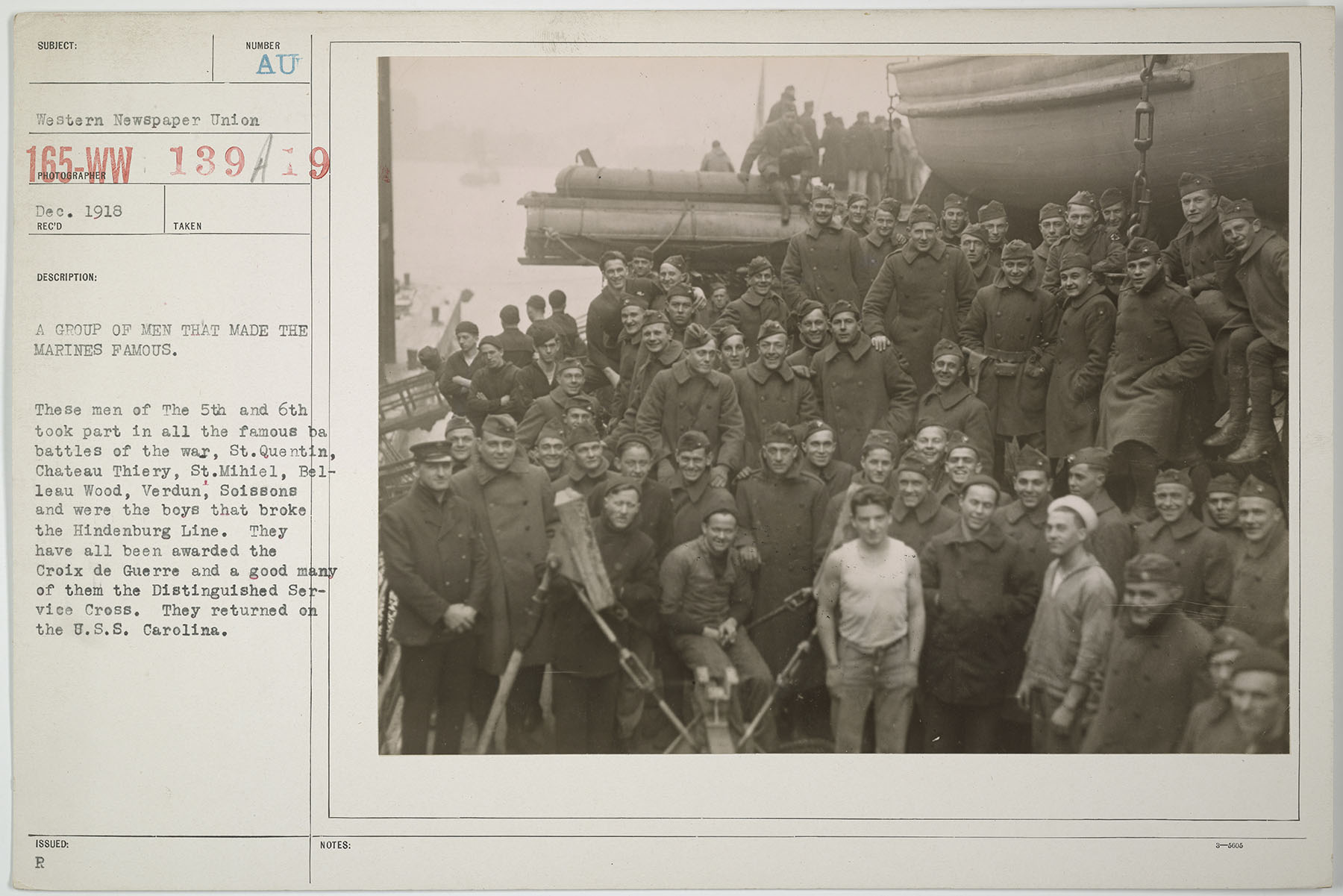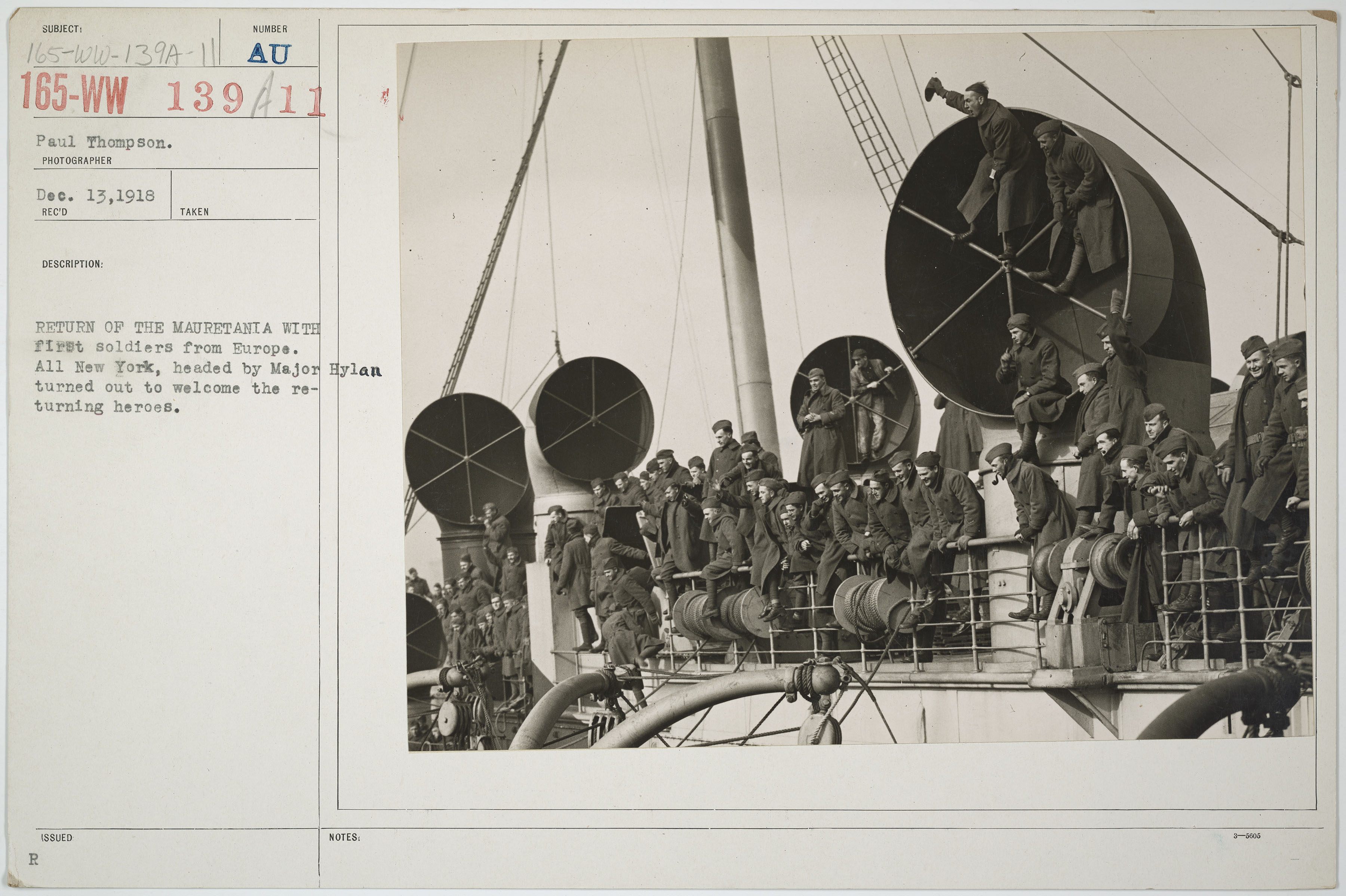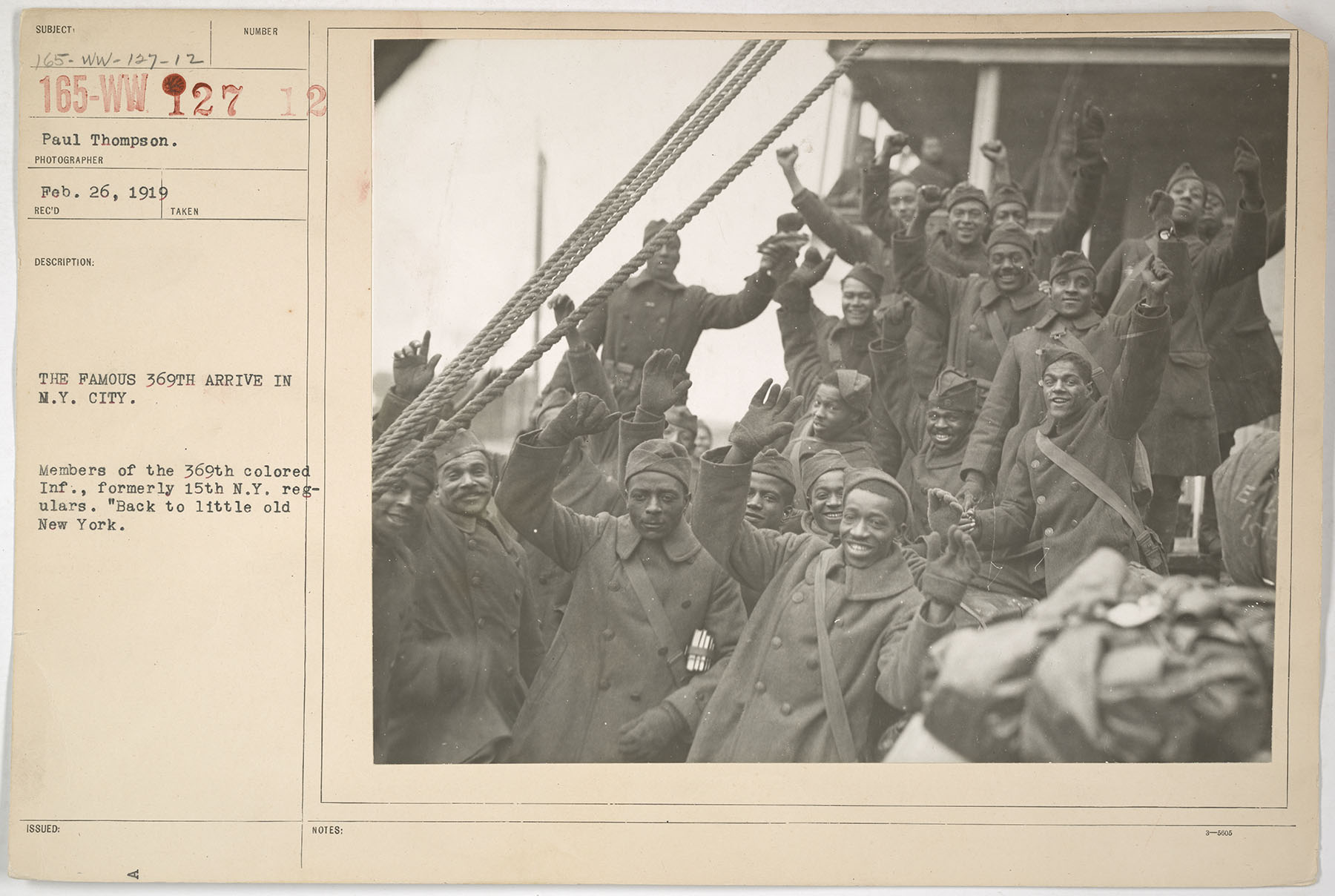Bring Them Home, Uncle Sam
More than two million American service members were overseas with the American Expeditionary Forces when the guns fell silent on November 11, 1918, ending World War I. Americans would continue to serve in Germany as part of the Allied Occupation until 1923, but many were quickly demobilized. The service members boarded troop ships for the trip home from Europe, arriving at ports in New York, Baltimore, and Philadelphia.
Many Americans sought to honor the returning service members with patriotic greetings at the dock, parades to welcome them home, and memorials to honor their service. President Woodrow Wilson proclaimed November 11, 1919, as Armistice Day, creating an annual day to honor those who brought about the end of the “Great War.” Two decades later, America would find itself embroiled in World War II and then in the Korean War, with many more soldiers deserving of honor. In 1954, President Dwight Eisenhower rededicated Armistice Day as Veterans Day to honor all of America’s veterans for their service and sacrifice.

U.S. Marines of the 5th and 6th Regiments returned back to the United States aboard the U.S.S. Carolina. The Marines participated in many of the major battles of World War I, including St. Quentin Canal, Chateau-Thierry, Saint-Mihiel, Belleau Wood, Verdun, and Soissons. They all received the Croix de Guerre, and many of them also received the Distinguished Service Cross, December 1918. Records of the War Department General and Special Staffs
U.S. Marines of the 5th and 6th Regiments returned back to the United States aboard the U.S.S. Carolina. The Marines participated in many of the major battles of World War I, including St. Quentin Canal, Chateau-Thierry, Saint-Mihiel, Belleau Wood, Verdun, and Soissons. They all received the Croix de Guerre, and many of them also received the Distinguished Service Cross, December 1918. Records of the War Department General and Special Staffs

The first soldiers returning from Europe arrive aboard the RMS Mauretania. New York Mayor John Francis Hylan led the city in welcoming the returning service members home, December 15, 1918. Records of the War Department General and Special Staffs
The first soldiers returning from Europe arrive aboard the RMS Mauretania. New York Mayor John Francis Hylan led the city in welcoming the returning service members home, December 15, 1918. Records of the War Department General and Special Staffs

The famous U.S. Army 369th Infantry Regiment, an African American unit known as the “Harlem Hellfighters,” arrives in New York City, February 26, 1919. Records of the War Department General and Special Staffs
The famous U.S. Army 369th Infantry Regiment, an African American unit known as the “Harlem Hellfighters,” arrives in New York City, February 26, 1919. Records of the War Department General and Special Staffs
Additional Online Resources: